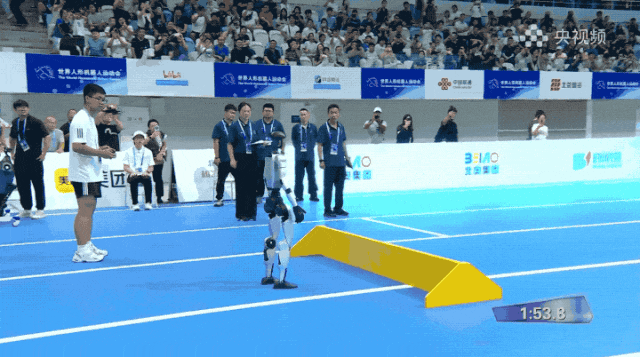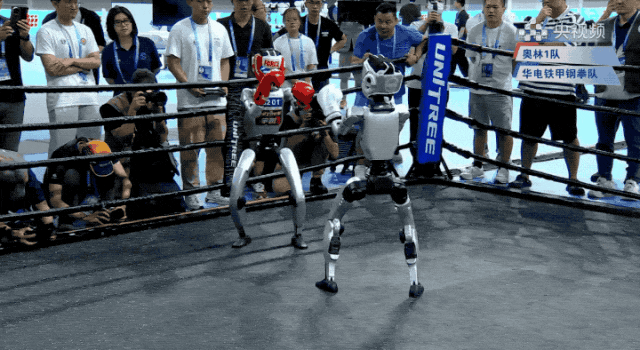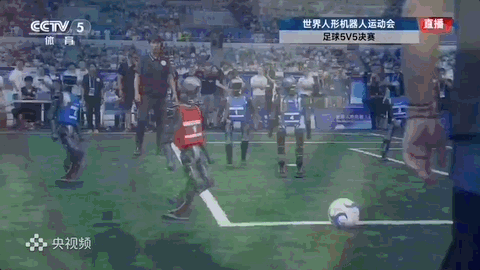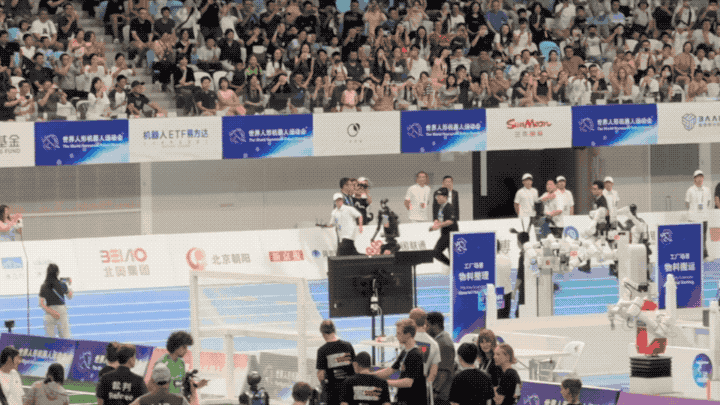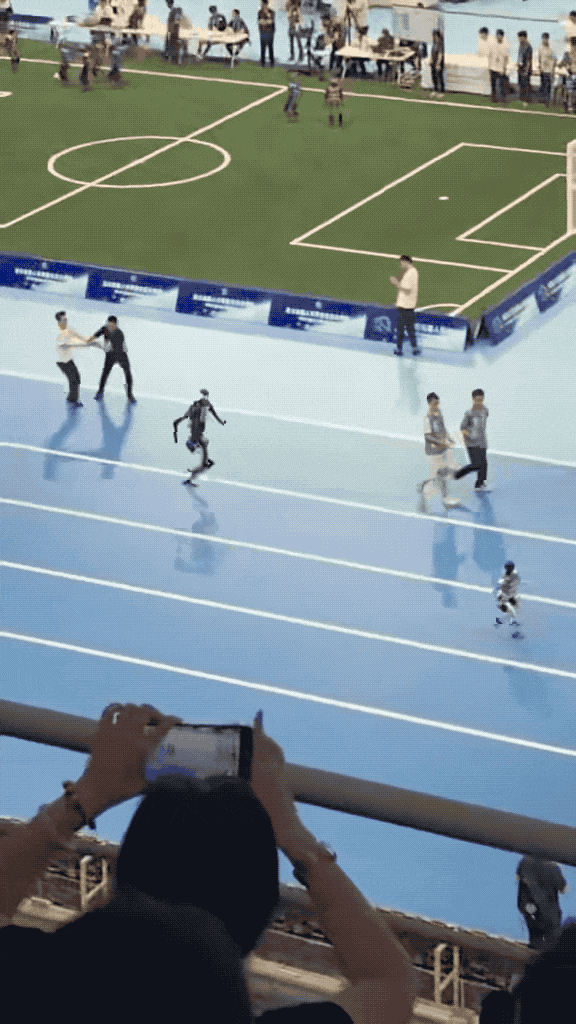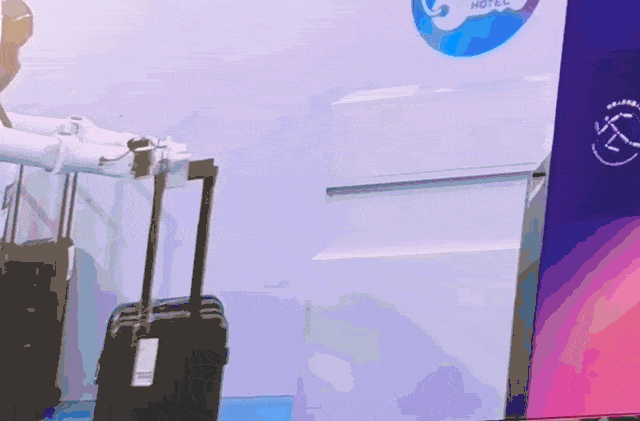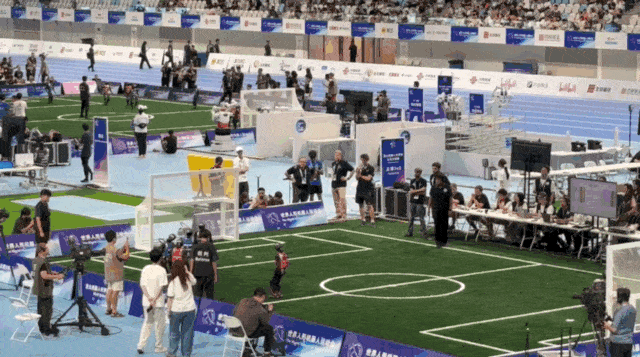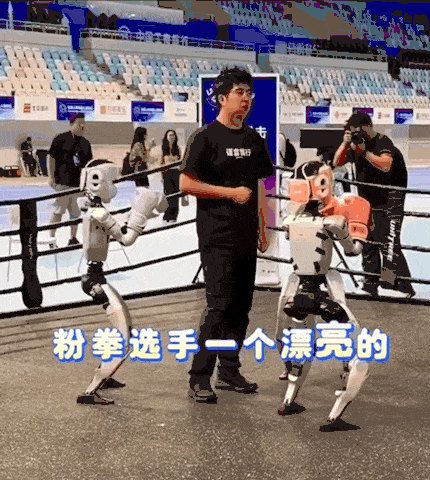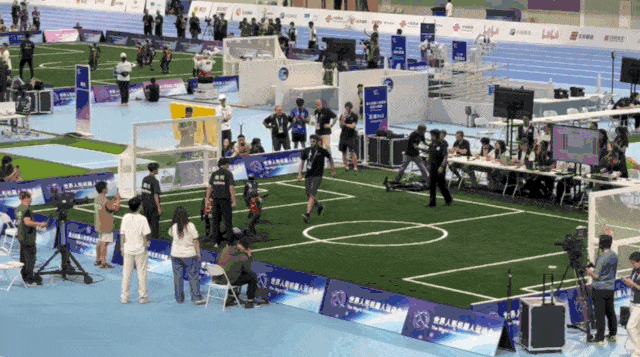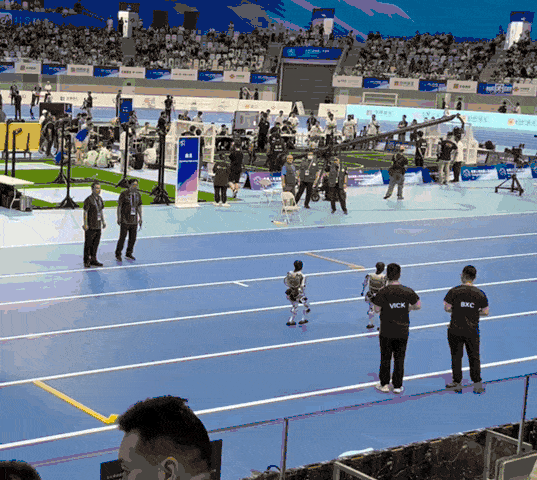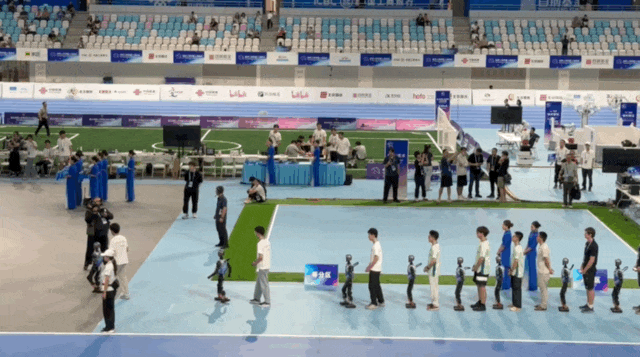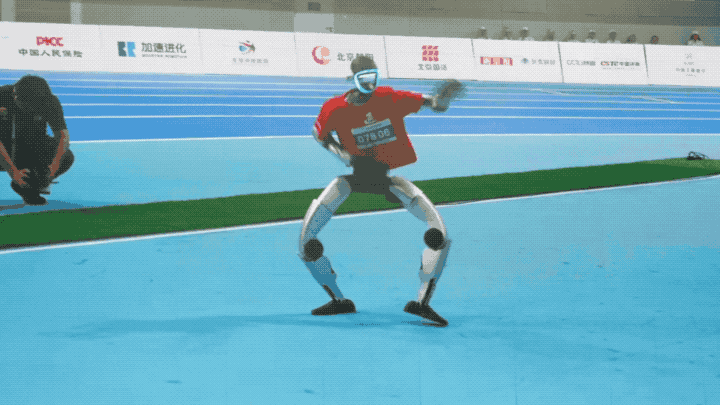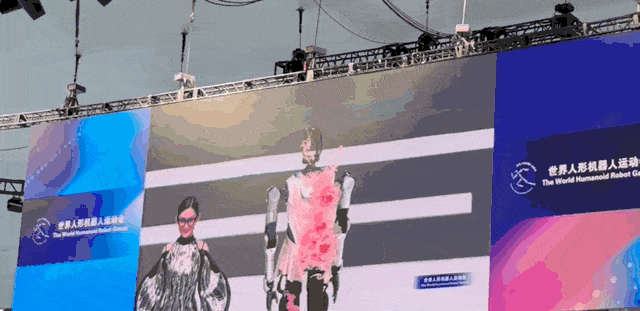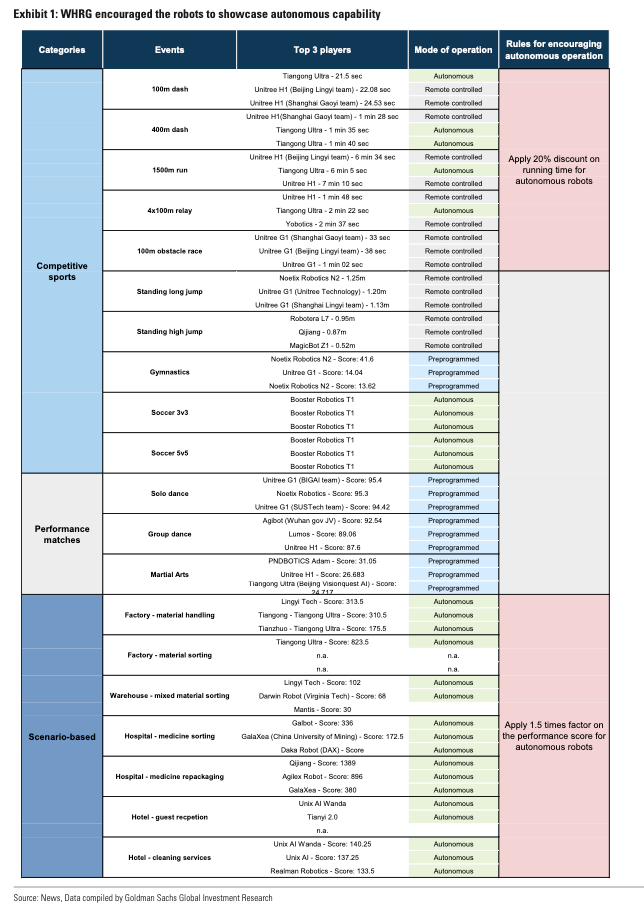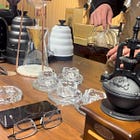Best moments from the 1st World Humanoid Robotics Games in Beijing
Robots were clumsy, but the future is sprinting fast!
Just a gentle reminder—if you’re using cellular data, this newsletter contains many GIFs.
This past weekend, I went to see the 1st World Humanoid Robot Games held in Beijing.
The event welcomed 279 teams from 16 countries, with more than 500 humanoid robot “athletes.” Among them were China’s domestic “superstars,” such as Unitree (the Hangzhou startup whose robots danced at China’s Spring Festival Gala) and Tiangong (the robot that won first place in the humanoid robot marathon back in April, also held in Beijing).
Today, I want to share some of the best (and funniest) moments! (Some of the GIFs were taken by me at Sunday’s event, and others were kindly created by 量子位, an excellent publication on WeChat that focused on AI and technology trends.)
It was a 3-day competition featuring a wide range of events: 3v3 football, 5v5 football, kickboxing, and track-and-field sports such as high jump, long jump, 4x100 relay, 100m/400m dash, 1500m run, obstacle race, and even gymnastics—the setup was very much like a human Olympics.
Unitree won a total of 7 gold medals, including the 100m obstacle race, which tested humanoid robots’ ability to run, jump, balance, and identify barriers.
“奥林1队 (Olympics Team 1)” won the kickboxing final, which was actually remote-controlled by award-winning athlete Xue Ming, who played for China's national volleyball team.
The much-anticipated 5v5 soccer tournament was won by Tsinghua University. All teams used Booster Robotics T1 hardware, competing by optimizing algorithms. Booster Robotics—founded in 2023, also by Tsinghua alumni—designed humanoid robots specifically for developers and researchers. The T1 model became the only humanoid robot showcased at NVIDIA’s Spring Festival event.
The soccer matches were fully autonomous.
A highlight: the game rules encouraged autonomous control. For instance, in track and field, robots got a 20% reduction in running time if they were fully autonomous. Tiangong Ultra won the 100m dash under full autonomous mode (the team engineer had to chase it hard to keep up!).
But of course, penalties were applied to those that “hit and run.”
Another highlight: beyond competitive sports, the Games also featured real-world scenario competitions—from hotel service and cleaning to medicine sorting and industrial material handling. These tasks required both accuracy and speed.
For instance, the medicine-sorting task required the robot to first read the prescription (fortunately, it was computer-printed, not handwritten by doctors) and then retrieve the correct medicine from the shelf.
The Games welcomed 192 university teams and 88 enterprise teams, with prize money of 10,000, 30,000, and 50,000 RMB awarded to the winners of scenario-based competitions. Teams used a variety of hardware, but impressively, all robots competing were autonomous.
There were plenty of funny moments. Everybody had a good laugh.
“Sir falls a lot”
“Sir hit my engineer”
“Human ambulance”
A robot (funded by Chia Tai Group) that took forever to finish the 4x100m relay race—but when it finally crossed the finish line, the whole audience clapped.
“Cutie McSmarty Bots” getting their medals
Robots hip-hop dancing,
walking in a fashion show (with clothes designed by local students from Beijing),
and even performing a Terracotta Army drum show.
Because it’s summer break in China, the audience was full of kids. I often overheard parents telling them: “Fun, right? Study hard and grow up to be like these engineers!” Even during vacation, Chinese parents never miss the chance for a “gentle push”—but I liked the fact that in China’s culture, engineering and tech aren’t considered nerdy—they’re seen as something worth celebrating with a fun event like this! (At one point, the commentator invited the entire audience to chant "Hello, world" :) )
Robots fell a lot in the competition—but that’s half the fun! I really do hope to see this turn into an annual (or even Olympic-style) global event. The next decades will be the race of brilliant minds—What could be cooler than a worldwide showcase of such progress?
Some people complained that many of the competitions were “useless” (like dancing robots). But I think it’s awesome that China is finally encouraging these so-called “useless” pursuits by hosting a full-fledged Games. Innovation is born from generous funding, relentless trial and error, and—equally important—the curiosity and joy of doing many "useless" things just for fun. Great inventions can't be planned!
Below are the winners of the major competitions and their corresponding hardware (chart organized by the Goldman Sachs team).
And if you’d like to further understand the investment implications behind the humanoid robot value chain, you can read my previous newsletter on the topic:
I hope you enjoyed this newsletter as much as I enjoyed watching the Games!



